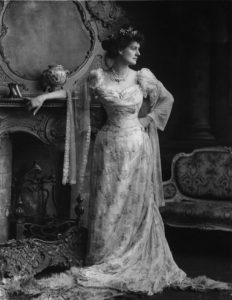Countess Markievicz was a trailblazer in many ways; she was a politician, a suffragette and a revolutionary. She was the first woman to be elected to the British House of Commons as well as being one of the first women in the world to obtain a cabinet position becoming the Minister for Labour in 1919.
Growing up, she was educated on her family’s estate in County Sligo, Ireland where she became inspired by the work of William Butler Yeats which developed in her an interest in the issues of Irish nationalism and women’s equality (particularly in the political world). Her interest was so strong that she joined Sinn Féin (a political party) and also the ‘Daughters of Ireland’ which was a women’s group who focused their attention on the issue of Irish nationalism.
During the Strike and Lockout of 1913 in Dublin Countess Markievicz joined the socialist group the Irish Citizens Army in support of the striking workers. In 1916 she played a part in one of the most important weeks in Irish history. The 1916 Easter Rising was an attempt by Irish revolutionaries to gain independence from England. While it would be unsuccessful it had long term results, one of which was an independent Ireland in 1922. While many women played a role in the Rising as nurses, she fought on the front line at St. Stephen’s Green with some accounts stating that she was the second in command at this location. She is reported to have shot and wounded several British soldiers. The group held their location for six days until a surrender order was given by Patrick Pearse.
As a result of her actions during the Easter Rising, Countess Markievicz was sentenced to death which was later changed to life in prison as a result of her gender. She only spent one year in prison as the following year the British government gave amnesty to all those that were involved in the Easter Rising.
Countess Markievicz’s political career took off after her involvement in the Rising was made known, in 1919 she was elected to the British Parliament (as she was a member of Sinn F√©in, however she did not take her seat). She was also elected to the Irish government where she named as the Minister for Labour making history as the first Irish Cabinet Minister and only the second in Europe. Her opinion on the Anglo-Irish Treaty led to her resigning her seat in 1922 and joining a different political party (Fianna F√°il). She ended up winning a seat with the party in the 1927 but died of complications related to appendicitis a few weeks later.
-Michelle O’Brien
Junior Girl
Girl Museum Inc.

